C, 8010 bytes
Way back, before SVG or EMF, you had to deal with raster, and if you wanted something to load right away, say before the O/S was ready, like a Windows startup screen, you had to use RLE, or run-length-encoding. This monster outputs a PBM file using RLE as the data. Build like usual and run like this ./biohazard > biohazard.pbm.
If you were to include all the frameworks required to generate, e.g. the SVG engine in HTML, the Java libraries, etc. this would likely be the smallest self-contained solution, because puts is the only external function, and it's typically one of the smallest stdio.h functions.
Regarding this detail:
If you use raster images, you should take a parameter (or two) as input that lets you adjust the resolution of the output (e.g. width/height).
I interpreted "should" as different from "must", e.g. as in RFC 2119, so I didn't include scaling, because for this code it would only be feasible to do multiples of the original, e.g. ./biohazard 2 and that would introduce atoi, printf and other complications which would detract from the main focus of the submission.
int o,i,x[]=
{4946,3,33,2,389,8,33,8,378,13,33,13,369,17,33,16,363,20,33,20,356,19,41,19,350,18,49,18,344,18,55,18,339,17,61,17,334,
17,66,17,330,17,71,17,325,17,75,17,321,17,79,17,317,17,83,17,313,17,87,16,311,16,90,17,307,17,93,17,303,17,97,17,300,
17,99,17,297,17,102,18,293,18,105,17,291,18,107,18,288,17,110,18,285,18,113,17,283,18,115,18,280,18,117,18,277,19,119,
18,275,19,121,19,272,19,123,19,270,19,125,19,268,19,127,19,266,19,129,19,263,20,131,19,261,20,133,19,259,20,134,20,257,
20,136,20,255,21,137,20,253,21,139,20,251,21,141,20,249,21,142,21,248,21,143,21,246,21,145,21,244,21,146,22,242,22,147,
22,240,22,149,22,238,22,150,22,238,22,151,22,236,22,152,23,234,23,153,23,232,23,155,22,232,23,155,23,230,23,157,23,228,
24,157,24,226,24,159,23,226,24,159,24,224,24,160,25,222,25,161,24,222,24,162,25,220,25,163,25,219,25,163,25,218,25,164,
26,216,26,165,25,216,26,165,26,214,26,166,26,214,26,167,26,212,27,167,26,212,26,168,27,210,27,169,27,209,27,169,27,208,
27,170,28,207,27,170,28,206,28,171,27,206,28,171,28,204,29,171,28,204,28,172,29,202,29,172,29,202,29,173,29,201,29,173,
29,200,30,173,29,200,30,173,30,198,31,173,30,198,30,174,31,197,30,174,31,196,31,174,31,196,31,175,31,195,31,175,31,194,
32,175,31,194,32,175,32,193,32,175,32,193,32,175,32,192,33,175,32,192,33,175,33,191,33,175,33,190,34,175,33,190,34,175,
33,190,34,175,34,189,34,174,35,189,34,174,35,188,35,174,35,188,35,174,36,187,36,173,36,187,36,173,36,187,36,173,36,186,
37,74,25,74,36,186,37,67,39,67,36,186,37,62,49,61,38,185,37,58,57,57,38,185,38,53,64,54,38,185,38,50,71,50,38,185,38,
47,76,48,38,185,38,45,81,44,39,184,40,41,87,41,39,184,40,39,91,39,39,184,40,37,95,37,39,184,40,35,99,34,41,183,41,32,
103,32,41,183,41,30,107,30,41,183,41,28,111,27,42,183,42,25,115,25,42,183,42,24,117,24,42,183,42,22,121,21,43,183,43,
19,124,20,43,183,43,18,127,18,43,183,43,17,129,16,44,183,44,14,133,14,44,183,44,13,135,12,45,183,45,11,137,11,45,183,
45,10,139,9,46,183,46,9,138,10,46,183,46,10,137,9,47,183,47,9,136,10,47,183,47,10,135,9,48,183,48,10,56,20,57,10,48,
183,49,9,50,33,49,10,48,184,49,10,45,41,45,10,48,184,50,10,40,49,40,10,49,184,50,10,37,55,36,10,50,185,50,10,33,60,34,
10,50,185,51,10,30,65,30,10,51,185,51,11,27,69,27,10,52,185,52,10,25,73,24,11,52,185,53,10,22,77,21,11,53,185,53,11,19,
81,19,10,53,186,54,11,16,85,16,10,54,185,56,11,13,88,14,11,56,181,59,11,11,91,11,11,59,176,63,11,8,94,9,11,63,171,66,
11,6,97,6,11,66,167,68,12,4,99,4,11,69,163,71,12,1,102,2,11,72,159,74,126,75,155,77,124,78,151,80,123,79,149,82,120,83,
145,85,118,86,141,88,116,88,139,90,114,91,135,93,112,93,133,96,109,96,130,98,107,98,127,101,104,102,124,104,101,104,
122,106,99,106,119,110,95,109,117,112,93,112,114,115,89,115,112,118,85,118,110,120,82,121,107,124,78,124,105,127,74,
127,103,131,69,130,101,134,65,133,99,137,60,137,97,141,54,141,95,146,47,145,93,151,39,150,91,157,29,156,89,166,13,165,
88,168,9,168,86,169,9,169,84,170,9,170,82,171,9,171,80,172,9,171,79,173,9,172,78,173,9,173,76,174,9,174,74,175,9,175,
72,176,9,175,72,176,9,176,70,177,9,177,68,64,20,93,10,94,20,63,68,57,34,83,17,83,33,58,66,54,42,77,21,76,43,54,64,51,
50,71,25,71,49,51,64,48,57,65,29,65,56,49,62,46,63,61,31,61,62,47,60,45,67,58,33,58,67,44,60,43,71,55,35,54,72,43,58,
41,36,8,32,52,37,51,33,8,35,41,58,40,36,17,26,49,39,48,27,16,37,40,56,39,38,22,23,46,41,45,24,21,39,39,55,37,40,26,21,
43,42,44,21,26,40,37,54,36,42,29,20,41,43,41,20,29,42,36,53,35,43,29,21,39,44,39,22,29,43,35,52,34,45,29,23,37,45,37,
23,29,45,34,51,33,46,29,24,35,46,35,25,29,46,33,50,32,48,29,26,33,47,33,26,29,47,33,49,31,49,29,27,32,47,32,27,29,49,
31,48,31,49,30,28,30,48,30,29,29,50,31,47,29,51,30,30,28,49,28,30,29,51,30,46,29,52,29,32,27,49,27,31,29,53,28,46,28,
53,29,33,26,49,26,32,29,54,28,44,28,54,29,34,25,49,25,33,29,55,27,44,27,55,29,35,24,49,23,35,29,56,27,43,26,56,29,36,
22,50,22,36,29,57,26,42,26,57,29,37,21,50,21,37,29,58,26,41,25,58,29,38,21,49,20,38,29,59,25,40,25,59,29,39,20,49,19,
39,29,60,24,40,24,60,29,40,19,49,19,39,29,61,24,39,23,61,29,41,18,49,18,40,29,62,23,38,23,62,30,41,17,49,17,41,29,63,
22,38,22,63,30,42,16,48,17,42,29,63,23,37,21,65,29,43,16,47,16,43,29,64,22,36,22,65,29,43,16,47,15,44,29,65,21,36,21,
66,29,44,13,50,14,44,29,66,21,35,20,67,29,45,11,53,11,45,29,67,20,34,20,68,29,46,8,57,8,46,29,67,20,34,20,68,29,46,6,
61,5,46,30,68,19,34,19,69,29,47,4,63,4,46,30,69,19,33,18,70,30,47,1,67,1,47,29,70,19,32,19,70,30,163,29,71,18,32,18,71,
30,61,2,37,2,61,29,72,18,31,17,73,29,59,5,35,5,58,30,72,18,31,17,73,29,58,7,33,7,57,30,73,17,30,17,74,30,55,10,31,10,
55,30,73,17,30,17,74,30,53,13,28,14,53,30,74,16,30,16,75,30,51,17,25,16,52,29,75,17,29,16,76,29,50,20,21,19,50,30,76,
16,29,15,77,30,50,21,16,22,50,30,77,15,29,15,77,30,50,26,7,25,51,30,77,15,28,15,78,30,51,57,50,30,78,15,28,15,78,31,50,
56,51,30,79,15,27,14,80,30,51,55,51,30,79,15,27,14,80,30,51,55,50,31,80,14,27,13,81,31,51,53,51,30,81,14,27,13,82,30,
51,53,51,30,82,13,27,13,82,31,50,52,51,31,82,13,26,13,83,31,51,51,51,31,82,13,26,13,83,31,51,51,50,31,84,12,26,13,84,
31,50,50,51,31,84,12,26,12,85,31,51,49,50,32,84,13,25,12,85,32,50,49,50,31,86,12,25,12,86,31,50,48,50,32,86,12,25,11,
87,32,50,47,50,32,86,12,25,11,87,32,50,47,49,32,88,11,25,11,88,32,49,47,49,32,88,11,25,11,88,32,49,46,49,32,89,11,25,
10,90,32,49,45,49,32,89,11,25,10,90,33,48,45,48,33,90,10,25,10,91,32,48,45,47,33,91,10,25,10,91,33,47,44,48,33,91,10,
25,10,91,34,46,44,47,33,92,10,25,9,93,33,47,43,46,34,92,10,25,9,93,34,46,43,46,33,93,10,25,9,94,34,45,43,45,34,94,9,25,
9,94,35,44,43,44,34,95,9,25,9,95,34,44,42,44,35,95,9,25,9,95,35,43,42,44,34,96,9,25,9,96,35,42,42,43,35,96,9,25,8,97,
36,42,41,42,35,97,9,25,8,98,36,41,41,41,36,97,9,25,8,99,36,40,41,40,36,98,8,26,8,99,37,39,41,39,36,99,8,26,8,100,37,38,
41,38,37,99,8,27,7,100,38,37,41,37,37,101,7,27,7,101,38,36,41,36,38,101,7,27,7,102,38,35,41,35,38,102,7,27,7,102,39,34,
41,34,38,103,7,27,7,103,39,33,41,33,39,103,7,27,7,104,39,32,41,32,39,104,7,27,7,104,41,30,41,30,40,104,7,29,6,105,41,
29,41,29,40,105,7,29,6,106,41,28,41,28,41,105,7,29,6,107,42,26,41,26,42,106,7,29,6,108,42,25,41,25,42,107,7,29,7,107,
44,22,42,23,43,108,6,30,7,108,44,21,42,21,45,108,6,31,6,109,45,19,42,20,45,109,6,31,6,110,46,17,43,17,46,110,6,31,6,
111,47,15,43,15,47,111,6,31,6,112,48,13,43,13,48,112,5,33,5,113,49,11,43,10,50,112,6,33,5,114,50,9,43,9,50,113,6,33,6,
113,50,8,44,9,49,114,6,33,6,114,48,9,45,8,48,115,5,35,5,115,47,9,45,8,47,116,5,35,5,117,45,8,46,9,45,116,6,35,6,117,44,
8,46,9,44,117,5,37,5,118,42,9,47,8,43,118,5,37,5,119,41,9,47,9,41,119,5,37,5,120,40,8,48,9,40,119,5,39,5,120,39,8,48,9,
38,121,5,39,5,121,37,9,49,8,37,122,5,39,5,123,35,9,49,9,35,123,4,41,5,123,34,8,50,9,34,123,5,41,5,124,32,9,51,9,31,125,
5,42,3,127,30,9,51,9,30,127,3,43,1,130,28,9,52,9,29,130,1,176,26,9,53,9,26,310,24,9,54,9,24,314,22,9,55,9,22,317,20,9,
55,9,20,320,18,9,56,10,17,324,15,10,57,9,16,327,13,9,58,10,13,331,10,10,59,9,11,335,8,9,60,10,8,339,5,10,61,9,6,344,2,
9,62,10,2,358,63,368,65,367,65,366,67,365,67,364,69,362,70,362,71,360,73,358,75,356,76,356,77,354,79,352,81,350,82,349,
84,215,2,130,86,130,3,79,5,129,87,128,6,77,6,127,89,126,6,79,6,125,91,124,7,80,6,123,93,122,7,82,6,121,95,120,7,84,6,
119,97,118,7,86,7,115,100,116,7,87,8,113,102,114,7,89,8,111,105,111,7,91,8,109,107,109,7,93,8,107,109,106,9,94,9,103,
112,104,9,96,9,101,115,101,9,98,10,97,118,98,10,100,10,95,121,95,10,102,11,91,124,92,11,104,11,89,127,88,11,107,12,85,
131,85,11,110,12,81,135,81,12,112,13,77,138,78,13,114,14,73,143,73,14,116,15,69,72,2,73,69,15,118,17,63,74,5,73,64,16,
122,17,59,75,7,75,58,18,124,19,53,77,9,77,53,19,126,22,45,79,13,78,46,21,130,24,37,82,15,81,38,24,132,28,27,85,18,86,
27,28,135,37,5,95,21,95,5,37,138,134,24,135,141,131,27,131,144,128,31,127,148,124,34,125,151,121,37,121,155,117,41,117,
159,113,45,113,163,109,49,109,167,105,53,105,171,101,57,101,175,96,62,96,181,91,67,91,185,86,72,86,191,80,78,81,196,74,
84,74,204,67,91,67,211,59,99,59,219,51,107,51,228,40,119,39,242,25,133,25,5311,0};
main(){for(puts("P1\n432 408");x[i];++i,o=!o)while(x[i]--)puts(o?"0":"1");}
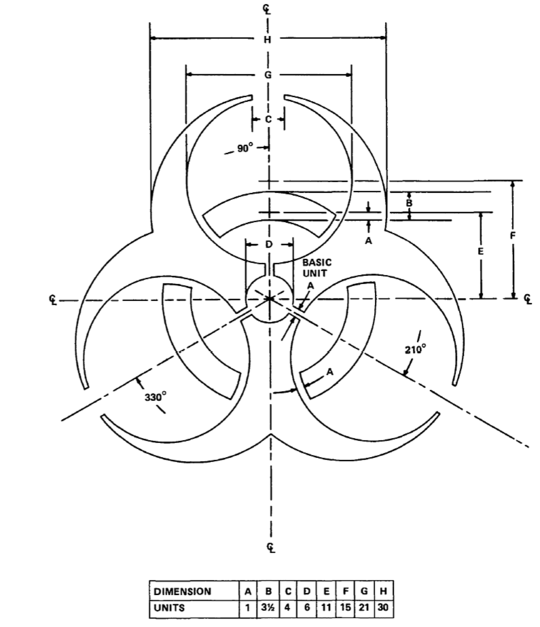

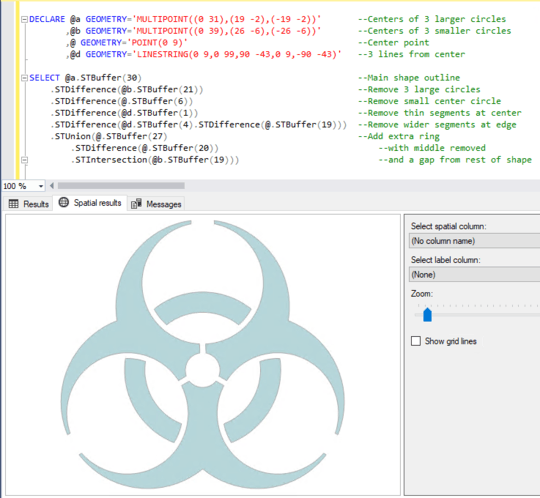






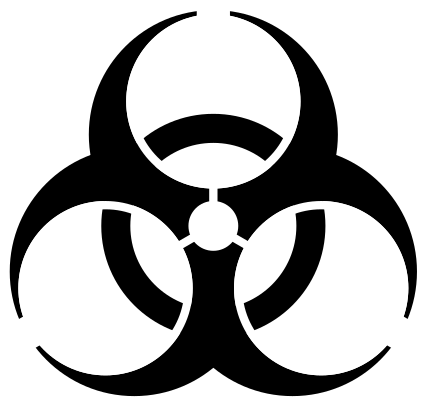
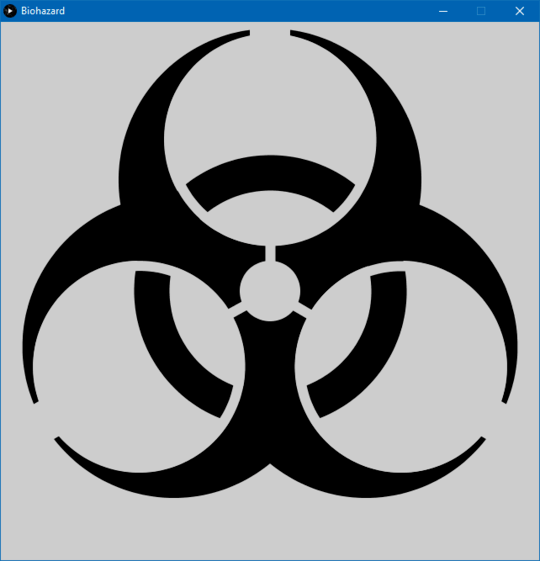
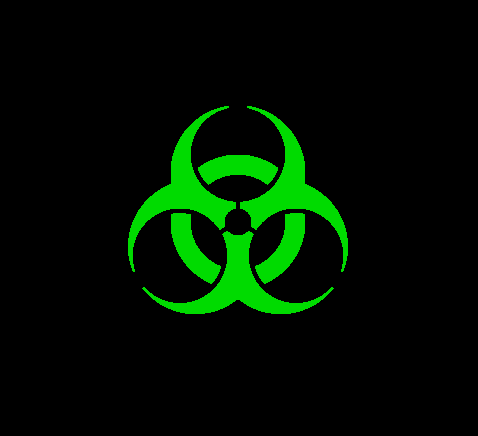
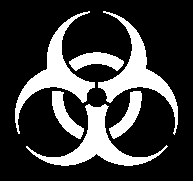
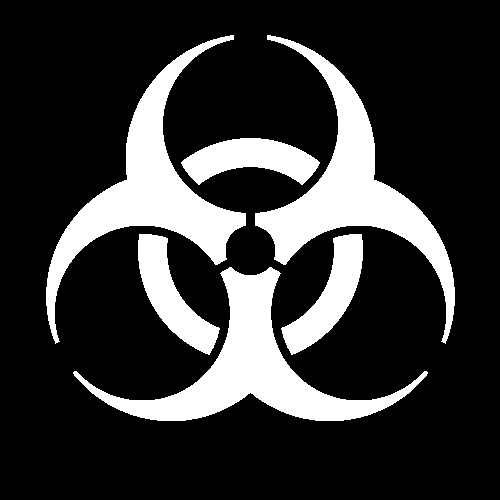
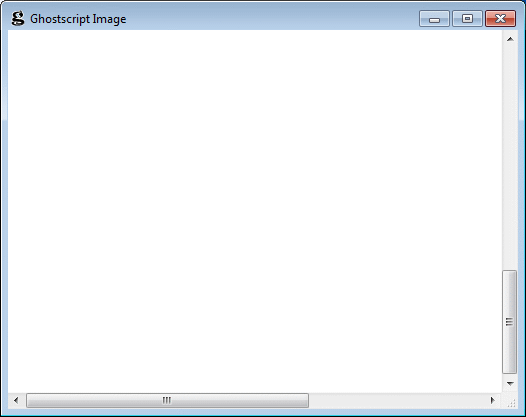
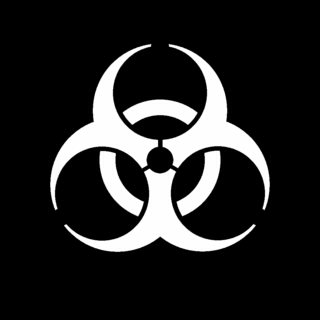
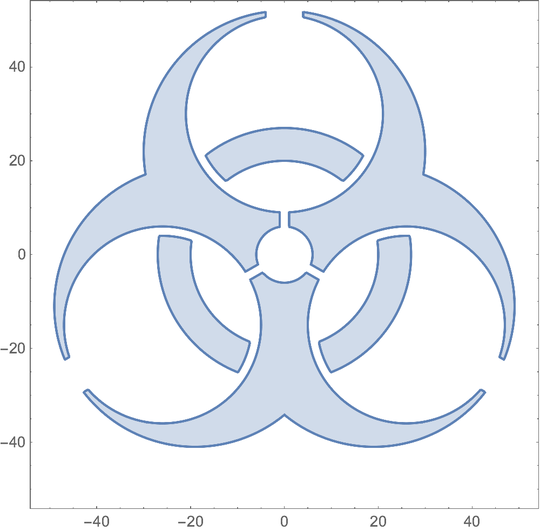
2Loophole: can we just put a 1x1 pixel image inside a variable sized background? – John Dvorak – 2019-09-04T13:49:42.123
I don't think it is, if you set the resolution large enough the symbol should still appear. And in any case I hope people here have enough common sense to understand what we mean:) – flawr – 2019-09-04T14:11:31.707
1If I had time to spare I would give it a try with PostScript or turtle graphics. – Guy Coder – 2019-09-04T14:46:21.600
Hmmm, I wonder what a Racket solution would look like. Or a Processing or Compressed Turtle solution. – noɥʇʎԀʎzɐɹƆ – 2019-09-04T21:15:50.923
Since you want the points to be blunted can you put that in your question? Currently it doesn't provide the information such as how long the bluntings should be only how wide apart. – Post Rock Garf Hunter – 2019-09-05T13:07:10.703
1@SriotchilismO'Zaic The length is determined by the two circles: They each have a given center and radius, so the length is determined by the size of the gap. – flawr – 2019-09-05T13:09:55.893
@flawr What is the center of the larger circle then? I don't see it indicated on the diagram. – Post Rock Garf Hunter – 2019-09-05T13:10:37.350
1That is "E" in the original diagram (the crosses represent the circle centers), and $11$ in the one I added below (where the radius meets the axis of symmetry). – flawr – 2019-09-05T13:13:22.983
Ah I see thanks the diagram makes it look like E has only to do with the central annulus. I will fix my answer to center it correctly and then it should blunt properly. – Post Rock Garf Hunter – 2019-09-05T13:22:37.390